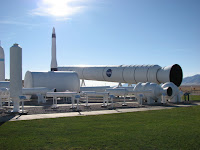Unusual circumstances caused Ed and me to interrupt our journey on Interstate 80 with a stop in North Platte, Nebraska. My submission to CNN iReport about our RV cross-country trip grabbed the attention of the network producers. We weren’t just taking the typical trip to Grandma’s – struggling with Thanksgiving flights or driving cross town – we were motoring in our Prevost across the country from Oregon, to Ingersoll, Ontario, then finally into Greensburg, Pennsylvania. CNN was intrigued and requested more information to air the story. We needed a strong cell phone signal in order to talk with the CNN producer as prep for a later broadcast about our “going home for the holiday” experience. The cell signal strength in North Platte gave us indication that this important call would not be dropped. As arranged, Ed and I responded to the producer’s questions wile parked off I-80. We would go live on the air later in the day compressing our 45 minute call to a mere 3 minutes when broadcasting. With all this excitement, I hadn’t noticed what was beyond our coach window until I stepped outside for a breath of fresh air.
What is the place I wondered? There was a lake, picnic tables, statues, and a huge American flag waving in the breeze.
This was Iron Horse Park, a pleasant contrast to the typical commercial interstate truck stops and convenience store gas stations. It was a park where Interstate 80 crosses U.S. Highway 83 in North Platte, Nebraska.

When I stepped beneath the arch, I paused to admire a bronze statue called “Defenders of Liberty.” And then, I read the some of the thousands of names of veterans inscribed in the bricks that make up the memorial walls, the names of the true “Defenders of Liberty.” I didn’t recognize any names. These weren’t the famous military heroes. They were the honorable men and women who served in the military during the Twentieth Century. They’d served in the Army, the Navy, the Air Force, the Marines, and Coast Guard. More bronze statues on either side of the walkway paid tribute to each of these branches of military service.
At the “Place of Meditation” where the US flag waved, names of veterans from Nebraska preserved the memory of those who sacrificed their lives during Twentieth Century conflicts. The back wall of the Memorial was a brick bas-relief mural illustrating the struggle to preserve peace in the Twentieth Century.
While I quietly reflected on these heroes and the struggles throughout the world to keep peace, terrorism struck and the fragility of human life and peacekeeping efforts became front page news. Far from this Nebraska town, violence erupted in Mumbai, India. That very day, acts of terrorism would eventually kill 179 people. CNN covered this tragedy exhaustively for two days and understandably cut our story about a joyful ride home for the holidays.
Days later, I later I still followed this tragic news story and wondered about the possible memorial this latest conflict would inspire. It wouldn’t be dedicated to our U.S. troops or be along a US interstate; rather it would be in India and remember those who died in Mumbai.
November 26, 2008
America’s 20th Century Veterans’ Memorial
Iron Horse Park
Intersection of I- 80 & Hwy. 83
North Platte, Nebraska
308-532-6579
































